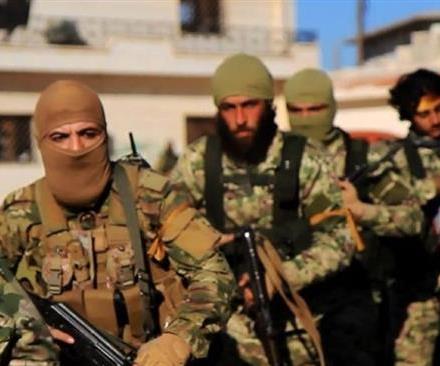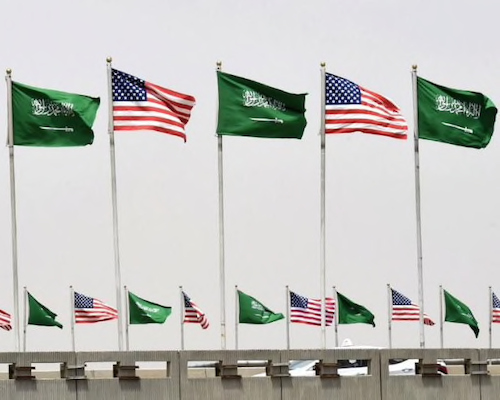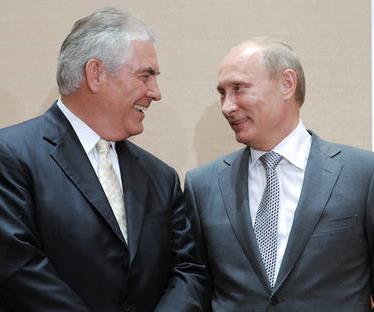 “Half claim the vocation of a leader, a quarter believe they are prophets, and at least ten percent take themselves for gods,” former Syrian President Shukri Al Qawatli, speaking about the Syrian people in 1958.
“Half claim the vocation of a leader, a quarter believe they are prophets, and at least ten percent take themselves for gods,” former Syrian President Shukri Al Qawatli, speaking about the Syrian people in 1958.
I have lived or worked in the Middle East and the Arab world most of my life. In one way or another, I experienced a half century of its culture and politics. I have seen its spikes, its highs and lows, its impetuous sixties led by Gamal Abdel Nasser’s dreams, its more practical if turbulent eras through the 80s and 90s, and then, the death of the Arabs in the first decade of the 21st century, when they were surpassed by the resourceful Turks, the wily Iranians and the ever-inventive Israelis.
I also shared with the Arabs the excitement and the hope of the Arab revolutions of 2011. These seemed to herald a new time, a new Arab, less ideological and defeatist. Somehow, the events even seemed to represent a global leap: politics at its best in the sense of being truly a reflection of the people’s needs. Some of the early events even hinted at a shift towards new kinds of democracy and citizens’ engagement. But, the descent since has been clear and certain. Chaos, fragmentation and disorder are the rule of the day. No one knows what is up or down, left or right, or, most importantly, how to take a country forward.
The region now is the example to all of what not to become, a lesson of human madness and foibles that must be avoided. Reeling in the past, fossilised in ideology and dogma, sustaining the unsustainable (such as the necessity to have many children), the Middle East seems to be its own worst enemy. Above all, the region is soaked in high emotions and distrust rather than a sober and moderate attitude required to address serious, even possibly mortal, resource challenges amidst severe global competition.
It is correct that Egypt is not Sweden nor Iraq - Canada, and that the cultures differ. But, demographic and resource problems, as well as social alienation across the world, are human, not Arab problems. Trying to solve them by an obsessive attachment to cultural identity is madness if it blinds you to the needs of reality – and survival.
The Middle East is exactly what the rest of the world should not be: egoistical, dreamy, distrustful, excessively attached to the past and to identity. It is “I” before anyone, however, that “I” is defined (self, family, tribe, party, religion, or nation), and dreams and excitement before reality, i.e. the triumph of illusion while the body and mind fall apart. One look at Cairo from any height will paint that picture of the body sinking, dust filled air, garbage covered rooftops, a human hive of survival with little consideration for the quality of that life. It’s a credit to Egyptians that they do so well under such conditions, their social culture remains full of humour and generosity, but for how long?
There is no doubt that there are many young Arabs who do not share these unsavoury qualities of the region. Somehow due to virtual or real-life exposure to new knowledge and other cultures, and despite poor educational systems, they have become free of the traditional dead-ends to some degree. However, these youth do not run the region, they do not have the experience to, and will not have this chance for at least a couple of decades, during which time holy havoc may be wreaked through political mismanagement, and the in-fighting between all and all. The Lebanese civil war serves as a good example to the Arabs today, every group fought every other over 15 years and achieved no result at the end of the day. It’s a lesson not likely to be learned but repeated, as we now see in Syria.
There are many that blame conspiracies for the Arab failure. In their neat world of good guys bad guys, the people of the region are once again the victims of the conspiracies of the rich and powerful, i.e. NATO, Israel and the USA. This can mean that the “evil three” is behind Al Qaeda or, the opposite, Assad. During one day recently in the region, one person told me that the Americans are behind the Islamists in Syria, and by another highly educated individual, that they are conspiring to keep the Syrian regime in place. It does not matter, whether the USA intervenes or not, it is at fault. The key point is that it certainly cannot be the fault of the locals; the devil lies elsewhere. Ironically, these Arab views mirror the simplicities of Bush’s Axis of Evil, but no one sees the parallels. The truth of international politics is much more mundane than conspiracies. It is a mixture of blindness and guesswork among leaders that most people outside the system cannot (or will not) fathom. The truth is that the systems and the bases for effective diplomacy, i.e. one that consistently produces results, don’t exist today, and if that in itself is a conspiracy then the conspirators are as much victims as anyone else – for they know not what they do.
The truth is also that the failure in the region is not just an Arab failure. Israel is guilty of a profound self-centeredness in almost all its policies since its inception. The whole program has been about its survival, neighbours don’t exist or don’t belong. No matter whether this is the result of trauma and terror – no one is bound to horror forever – the bottom line is a profoundly destructive policy. It is not possible to build a constructive path out of a starting point that implies deep within it that one group is simply superior in needs and destiny to others.
The Turks and Iranians are not much better. Implicit in their attitudes towards the region is imperial over-reach, each is deeply involved in a trance about an imperial past that must somehow take root in today’s realities. The Ottoman and Persian empires, however, are not destined to show their might again, for the conditions are not those of the 4th century B.C. or the 15th A.D., even if Iran and Turkey may well have a proper and constructive place in today’s world as economic and cultural powers.
The region was not always like this. It was once the font of brilliance and enlightenment so captivating that it infected Europe with its knowledge. The seed of understanding went from the Toledo school of translators, the many interactions of the Crusades with the East, and even from the Islamicized Normans of Sicily up to Florence and the European city-states. From there it developed into the flowering of the Renaissance and the Enlightenment, the basis of much of the cultural and scientific gains we have today. If we reach back further, the region was also home to ‘Um El Dunya’, Ancient Egypt, truly the Mother of the World (and civilizations), as well as the daring of the original monotheism of the Levant, from the Jewish prophets to Akhenaton, and the creativity and craft of the Phoenicians and the Canaanites, their alphabet and navigational skills the equivalent of our information technology today. Even before that, the Middle East was the source of the most advanced leaps of human development from the cultivation of wheat to the magical draw of Gobekli Tepe, a temple site that may have been one of the most civilising events of history. We would not be who we all are without the Middle East, there is no doubt of that.
However, the world, maybe the universe itself, may be marked, by ascent and descent, and so it is with civilisations. Once the height of human potential, the region is now in full and profound descent, reaching lows as quickly as it can – and with determination. It is true that nothing can continue to rise forever and that decline is inevitable, but there is always the possibility of new adaptation, or of stoically waiting during difficult periods. The rush to insist on reliving the past, of reasserting old identities and rituals over and over again, is however, an action in one direction: sure and fast descent, because it belies the nature of today’s reality. There are many people in the Middle East who would rather die and destroy than give up or change their habits, identities and dreams.
It is here that the region offers a crucial lesson to us all. These are difficult times across the world. We have made a world of our own creation that is not sustainable, and continue to look within its limited logic for answers, looping further into consumerism and techno-distraction, worsening our condition in the downward spiral. We eat too many fish, pollute too much air, and want too many goods, while distrusting those from other tribes around us. Meanwhile, we expect solutions by staring into a screen, a state that only creates a deadened trance or a froth of excitement. Others look to international meetings for answers, but these are processes enveloped in processes, very distant from producing results. This is hardly the ground for real and concrete solutions to our problems. Our challenges are many and, sadly, one of the first steps we may have to do is look at the Middle East, and know what road not to follow. Even long-suffering Africa may be rising in new, wondrous and unexpected ways into wealth and riches while the Middle East spirals into an inchoate psychosis of identities.
It may well be a strange wonder that there are places in this world that serve as a dramatic reminder for the rest of us of what not to do, in a sense so humanity can save itself. Unbeknownst and unconscious of its role, the Middle East may be like a sacrificial lamb so other regions have a hope of successfully diminishing their appetites or seeing more broadly into a common humanity. The lesson is there: self-obsession, whether of the individual or the group, and an insistence on a life of illusions will breed little but war, shortage and suffering. We must absorb this reality by looking clearly how the Middle East mismanages, and avoid that fate.
Indeed, if that lesson is to be learned, then it may be worthwhile to be clearer regarding the problem. From this very region, in Sufi lore, there is the idea of the Commanding Self, the ‘Nafs el Ammara’, that is equivalent to the modern idea of the ego but, clearer in definition: it is that part of us that is crucial to survival, a life force we share with a hamster, but that also ‘commands’ the rest of the mind to sometimes follow its self-centered and potentially selfish ways. It does so through the mortal twins of positive and negative expectation, of pleasure and pain, hope and fear, the tools of basic survival. It can either perform its limited if necessary function, or infiltrate and even take over our minds like a clever parasite.
Over a lifetime of practice, it can lead to endless greed and desire and the desperate anxieties and dissatisfactions that come with those tendencies. It can even take over our dream centres and, in a dark weave, ensure that we only imagine a massive illusion that, it assures, is ‘for our survival’. It also demands stasis in the tentacled house of selfishness it has built, and it does so by speaking in profoundly commanding ways of what to do and not. In other words, the Commanding Self can twist its basic purpose, as a force of life, and use our complex mind for its ends. The result? A self-affirming loop of endless appetite and anxiety. This is a kind of mental greed that is as devastating as the material greed plaguing so much of the planet. It is this state that is behind much of the region’s errors and falsehoods, an explanation of why its problems are cultural and psychological rather than material.
The Middle East is shot through with the vigorous and muscular arms of the Commanding Self. The devil lies there, not elsewhere. From the megalomaniacal speeches of Hassan Nasrallah, to the mother using emotional blackmail to keep her children near her, from Ghaddafi’s African manias to the exaggerated pride of the Arab male, the Commanding Self shows its might. It also translates into daily dishonesty and distrust. Meetings are held, agreement come to, but afterwards, each participant feels the right to ignore any consensus: the right to an absolute veto because “I” am the most important. This pattern causes everyone to take advantage before being taken advantage of, and the fangs of the Commanding Self become finely honed indeed.
At a fundamental level, this is a world of ‘either or’, with me or against me, the greys disappear and the unit trumps the whole. Stimulation and emotion must be immediate. Authority – the Commanding Self – is cherished and sought after and duplicated at all levels. The untamed pride and self-importance prohibit the validity of others, and the new. From parent to child, from the mosque to television, the habit of grasping and emotional turmoil and tyranny of authority, of the ‘command’, is passed on in the broken culture of the region. A consequent lack of creativity, and individual and group self-obsessions, come to define the culture.
There is no doubt that every region in the world shares some of these qualities, but, as media headlines and the chaos on the ground show, the Middle East is ahead of the game. As stated above, it is far from only the Arabs, Israel’s attitude towards its neighbours is also a testament to the power of this part of our psyche. Distrusting of all, dismissive of the needs of Palestinians, and fearful of eternal oppression, the Israelis have fed into the grand pipeline of darkness in the region, feeding it and growing in it: survival at all costs, including life itself.
This way can be given up. Humanity has much more to consider for itself than the Commanding Self. Our imagination, creativity, reason, empathy and many other qualities working in a balanced way, along with a Commanding Self that serves greater interests, can lead to wonders and solutions that are barely a twinkle in any one’s eye now. With the proper level of self-awareness, practise, and learning; above all by deciding to wake up to what is really going around us, we can become fuller human beings. It is when people in the region realize that they are just parts of a whole and not in some way entitled to privilege, including that of the victim, that the healing will begin. Such a sensitive, positive and active humility cannot harmonize with terms like Party of God or Chosen People, the superiority of one faith over another, or of frozen rituals from the past as ways of managing societies today. It is the opposite: our spirits and minds liberated from their regular chains and worn patterns and translated into action that are the road to our answers.
Enchained by the past, the Middle East refuses – so far – to reach these new paths. Yet it is also, ironically, the great lesson from the Middle East that it can be done. Many great people from there have shown the way, from Rumi to Mohammad, from Isaiah to unrecognised men and women of wisdom, to simply those who demonstrate daily their generosity or the courage to change convention. From its past, we can seek out some of the lessons of positive change and human possibility. For now, we must see the region soberly as a lesson of the dangers and disaster of descent. Maybe one day again, it too will join in the chorus of ascent that we are all designed to pursue.
John Bell is Director of the Middle East & Mediterranean Programme at the Toledo International Centre for Peace in Madrid and also Director of The Conciliators Guild, an initiative aimed at redefining our politics by addressing key aspects of human nature. IMESClub member.
Initially published by The Strix : http://www.thestrix.com/the-lesson/




 As Russia and the United States are holding
As Russia and the United States are holding  Jordan’s official stance regarding Syrian conflict supports peaceful resolution, yet reports have appeared in the media claiming that the kingdom is readying for a ground invasion of Syria. As “Eager Lion” military exercises in Jordan this year coincided with the intensified anti-terrorist fighting along Jordan-Syrian border, the media speculated about the US, British and Jordanian joint plan to send ground troops across the Syrian border. The news triggered brief war of words between Syria and Jordan, while Jordanian officials reiterated that no Jordan’s troops will be sent to Syria.
Jordan’s official stance regarding Syrian conflict supports peaceful resolution, yet reports have appeared in the media claiming that the kingdom is readying for a ground invasion of Syria. As “Eager Lion” military exercises in Jordan this year coincided with the intensified anti-terrorist fighting along Jordan-Syrian border, the media speculated about the US, British and Jordanian joint plan to send ground troops across the Syrian border. The news triggered brief war of words between Syria and Jordan, while Jordanian officials reiterated that no Jordan’s troops will be sent to Syria.  In recent months, the area of the so-called Syrian-Jordanian-Iraqi triangle has seen fighting, negotiations, armistice, the breakup of old coalitions and the propping up of new ones. Over the past few weeks, the Russian media have given this area much attention, mainly due to
In recent months, the area of the so-called Syrian-Jordanian-Iraqi triangle has seen fighting, negotiations, armistice, the breakup of old coalitions and the propping up of new ones. Over the past few weeks, the Russian media have given this area much attention, mainly due to  Fighting terrorism by the military means has always required a surgical precision and in-depth understanding of people and forces that take part in a local conflict. A well-known French expert on Islamic studies Gilles Kepel in 2000s explained a model of counter-terrorist activity that can still be applied for modern conflicts. According to this model if a responsive strike against Islamists is carried out without decent planning and leads to the casualties among the civil population, the civilians will start to sympathize terrorists, creating an impasse for conflict resolution.
Fighting terrorism by the military means has always required a surgical precision and in-depth understanding of people and forces that take part in a local conflict. A well-known French expert on Islamic studies Gilles Kepel in 2000s explained a model of counter-terrorist activity that can still be applied for modern conflicts. According to this model if a responsive strike against Islamists is carried out without decent planning and leads to the casualties among the civil population, the civilians will start to sympathize terrorists, creating an impasse for conflict resolution. Saudi Arabia is ready for US President Donald Trump’s visit amidst mounting concerns about his temperament towards Arab and Sunni Muslim strategies to combat terrorism.
Saudi Arabia is ready for US President Donald Trump’s visit amidst mounting concerns about his temperament towards Arab and Sunni Muslim strategies to combat terrorism. By Maria Dubovikova and Shehab Al Makahleh
By Maria Dubovikova and Shehab Al Makahleh On April 22, the Russian Federation Council — the upper chamber of the Russian parliament — stated that Moscow could supply Damascus with
On April 22, the Russian Federation Council — the upper chamber of the Russian parliament — stated that Moscow could supply Damascus with  Responding to Trump’s cruise missiles attack on Syrian Shayrat airbase, the tripartite meeting of foreign ministers of Russia, Iran and Syria was held today in Moscow. The meeting ended with a resounding ‘no’ to the Washington’s ‘Great Middle East Project’, and with equally resounding confirmation of already established policy of common fight against the plight of terrorism.
Responding to Trump’s cruise missiles attack on Syrian Shayrat airbase, the tripartite meeting of foreign ministers of Russia, Iran and Syria was held today in Moscow. The meeting ended with a resounding ‘no’ to the Washington’s ‘Great Middle East Project’, and with equally resounding confirmation of already established policy of common fight against the plight of terrorism. Rex Tillerson arrived to Moscow on Tuesday, having paralysed the traffic in Russia's capital, as police was blocking the roads to make a free way for his cortege, making blocked in traffic Muscovites send millions of curses in his address. The paralysis on the roads caused by Tillerson is very similar to the paralysis that has recently occurred in bilateral ties between the two powers, following the chemical attack in Idlib province reportedly committed by the loyal to Bashar al-Assad forces and then the strike of the SAA air base in Homs by the US «Tomahawk» missiles. The bilateral ties have reached the very low since the collapse of the Soviet Union and were about to pierce the bottom. The global uproar was at such extent that clash between the West and Moscow over Syria seemed inevitable. Russia has withdrawn from the the US-Russia air safety memorandum in SAR airspace and made it clear that in case of any further aggression threatening its safety will respond correspondingly to the challenge. Before the visit Rex Tillerson has sent Russia a kind of verbal ultimatum-like message to chose the side: with Iran and Assad or with the US. He was expected to bring to Moscow this ultimatums and tough rhetoric. But apparently he has lost them on his way to Moscow. The talks were finally constructive.
Rex Tillerson arrived to Moscow on Tuesday, having paralysed the traffic in Russia's capital, as police was blocking the roads to make a free way for his cortege, making blocked in traffic Muscovites send millions of curses in his address. The paralysis on the roads caused by Tillerson is very similar to the paralysis that has recently occurred in bilateral ties between the two powers, following the chemical attack in Idlib province reportedly committed by the loyal to Bashar al-Assad forces and then the strike of the SAA air base in Homs by the US «Tomahawk» missiles. The bilateral ties have reached the very low since the collapse of the Soviet Union and were about to pierce the bottom. The global uproar was at such extent that clash between the West and Moscow over Syria seemed inevitable. Russia has withdrawn from the the US-Russia air safety memorandum in SAR airspace and made it clear that in case of any further aggression threatening its safety will respond correspondingly to the challenge. Before the visit Rex Tillerson has sent Russia a kind of verbal ultimatum-like message to chose the side: with Iran and Assad or with the US. He was expected to bring to Moscow this ultimatums and tough rhetoric. But apparently he has lost them on his way to Moscow. The talks were finally constructive. “Half claim the vocation of a leader, a quarter believe they are prophets, and at least ten percent take themselves for gods,” former Syrian President Shukri Al Qawatli, speaking about the Syrian people in 1958.
“Half claim the vocation of a leader, a quarter believe they are prophets, and at least ten percent take themselves for gods,” former Syrian President Shukri Al Qawatli, speaking about the Syrian people in 1958.






